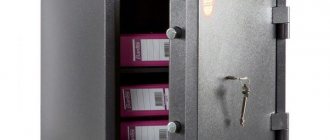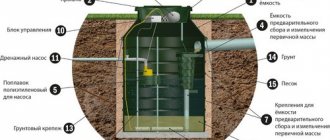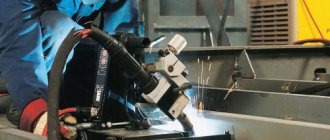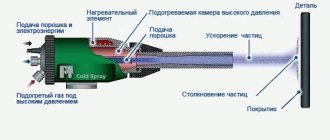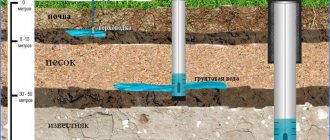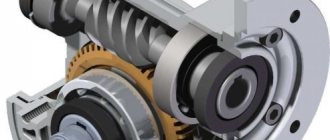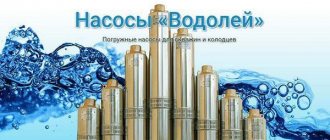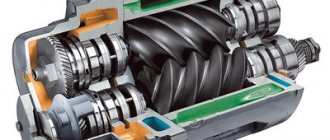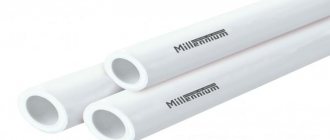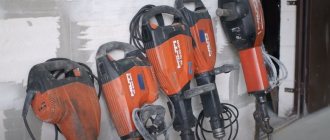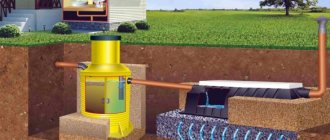Flame spraying is a method of applying a special coating to a surface in order to obtain additional qualities. Metal or polymer powders are used as spray material. They are heated to a plastic state using a flame, which is formed by the combustion of a mixture of oxygen with propane or acetylene. Transfer to the metal surface is carried out using compressed air.
The method belongs to the category of thermal spraying. Compared to other metallization methods, it is distinguished by its high productivity and low cost of work.
General information about the flame spraying method
The method is based on the use of thermal and kinetic energy to improve the restoration, functional or decorative characteristics of the product. Filler material for performing work is produced in the following forms:
- wire;
- rods;
- powder.
Each type has its own scope of application. For example, experts recommend using powders to restore machine parts and mechanisms. Unlike wire, they allow you to change the composition of the coating, which helps improve the quality of the sprayed layer.
The product processing procedure consists of the following steps:
- The powder is fed to the heat treatment zone. It can be supplied through the feeder channels or supplied from the outside of the burner.
- Under the influence of high temperature, the filler material melts, acquiring plastic properties.
- The gas performs the functions of transferring the composition to the surface being treated. Flying particles move at high speed - it can reach 160 m/s.
- The sprayed material forms a protective layer when interacting with the surface.
The wire or rods are fed into the heat treatment zone using a roller mechanism. The average cross-sectional value of the filler material is 3 mm. When processing large areas, it is permissible to use wire with a diameter of up to 7 mm to increase productivity.
There is also a method of high-speed flame spraying, which is characterized by a high feed rate of filler material. Due to the significant impact, the possibility of manual surface treatment is excluded. All work is performed using automatic or robotic equipment.
As mentioned above, temperature treatment is carried out using thermal energy, which is generated during the combustion of combustible gas in an oxygen environment. The best results can be achieved when using acetylene. Its combustion temperature varies between 3100–3200 ºC. For comparison, here are similar characteristics of available substitutes:
| Type of flammable gas | Heat of combustion, kJ/m³ | Flame temperature in oxygen environment, ºC | Oxygen consumption, m³/h |
| Acetylene | 52800 | 3100-3200 | 2,5 |
| Hydrogen | 10060 | 2100–2500 | 0,5 |
| Methane | 33520 | 2000–2700 | 2,03 |
| Propane | 87150 | 2400–2700 | 5,15 |
| Butane | 116480 | 2400–2700 | 6,8 |
The type of flame is determined depending on the composition of the mixture:
- oxidative;
- normal;
- restorative.
In the second case, the gas ratio is parity. An oxidizing flame is characterized by an excess of oxygen, and a reducing flame is characterized by an excess of flammable substance.
The flame spraying method has many advantages:
- Due to the low thermal effect on the workpiece being processed, it is possible to apply a coating to almost any material: glass, plastic, porcelain and even wood or paper. Other surface modification methods are primarily intended for metal products.
- During processing, the workpiece is not subjected to thermal deformation and does not change its parameters.
- Using installations for flame spraying, it is possible to process the workpiece with various compositions. This allows you to impart different properties to the surface without changing equipment.
- Unlimited size of processed area. Other metallization methods are limited by various factors: for cementation - the size of the furnace, for electrolytic deposition - the dimensions of the container with the solution.
- Low processing cost. The effect is best achieved by gas flame spraying of large areas.
- The large thickness of the coating allows the method to be used for the restoration of various parts. The processing allowance does not exceed 0.7 mm.
- The simplicity of the working equipment and its mobility makes it possible to use flame spraying in hard-to-reach places. The technological operation is also not particularly complicated.
- Thanks to a wide selection of filler materials, it is possible to obtain a product with specified properties without resorting to other methods of surface modification.
Naturally, there are also disadvantages:
- Gas flame spraying is ineffective when processing small parts. This is due to the high filler material consumption coefficient.
- Difficult production conditions. For preliminary preparation of the product, sandblasting is performed, which leads to an increased level of dust in the work area.
- During the spraying process, small particles of the composition remain in the air. For this reason, production premises are subject to increased requirements for the ventilation system.
| Back |
Flame spraying equipment
New universal burner for flame powder spraying - model SABAROS METAL SPRAY JET An easy-to-use and affordable tool for applying various coatings in production and repair! 1. Purpose and brief description of the SABAROS Metal Spray Jet (MSJ) burner.
The burner is designed for spraying a wide range of powder materials - metal powders, metal-ceramic powders, composite powders, polymers. The new gas mixing system in the nozzle ensures maximum reliability and safety. Combustible gas (for example, acetylene) and oxygen are mixed directly in the spray nozzle, which virtually eliminates the possibility of flashbacks. 2. Design features of the SABAROS Metal Spray Jet (MSJ) burner.
- The spray nozzles also have the function of a gas mixer and are easy to change.
- The powder injection system is integrated with the spray nozzle adapter; by removing the spray unit, you can, if necessary, immediately change both the spray nozzle and the transport gas nozzle.
- The powder supply module has a built-in dispenser with three fixed positions; When the powder supply is open, there is a blockage for removing the module from the burner.
- The burner has a built-in transport gas valve, which allows, in addition to oxygen, to use other transport gases (for example, nitrogen, argon, etc.) and thereby achieve the special properties of sprayed coatings.
- Various annular nozzles for secondary gases (compressed air, argon, nitrogen, etc.) can be installed on the spraying unit, which also makes it possible to achieve special properties of sprayed coatings.
A set of special devices allows you to work efficiently and economically with any powder materials intended for flame spraying. The burner can be supplied in two main versions: 1) for working with metal powders; 2) for working with polymer powders. Each option can easily be converted into another using a set of appropriate parts. 3. Gas connection to the SABAROS Metal Spray Jet (MSJ) burner.
3. Removing the spray module from the SABAROS Metal Spray Jet (MSJ) burner.
4. Details of the spraying module of the SABAROS Metal Spray Jet (MSJ) burner.
5. SABAROS Metal Spray Jet (MSJ) burner powder supply module.
6. SABAROS Metal Spray Jet (MSJ) burner in operation with a normal spray nozzle.
7. SABAROS Metal Spray Jet (MSJ) burner in operation with a high-performance powerful spray nozzle.
8. Applications of the SABAROS Metal Spray Jet (MSJ) burner. The SABAROS Metal Spray Jet (MSJ) burner is an indispensable tool for:
- restoration of journals and shaft seats;
- manufacturing and repair of protective bushings;
- restoration of seats in the covers of electric motors and pumps;
- applying wear-resistant coatings to the areas of operation of stuffing box and other seals.
Purpose and application of the method
Gas flame spraying is widely used in various branches of modern industry. Using technology, the following work is performed:
- application of anti-corrosion coating;
- restoration of the babbitt layer of bearings;
- creating an electrically conductive or electrically insulating layer;
- decorative processing of various surfaces;
- elimination of defects in non-ferrous and ferrous castings;
- repair of rotating parts: shafts, journals or cams.
Surface properties depend on the type of composition. For example, to improve the heat resistance of a surface, flame spraying with aluminum powder is used. This procedure is called aluminization.
The essence and purpose of thermal spraying
The essence of thermal spray coating is the use of special materials, which are supplied in the form of powder, wire or rods. The workpiece is fed into a high-temperature zone and heated to a plastic or liquid state. Then gas enters the chamber under high pressure: it can be ordinary air or a special composition, depending on the requirements for the applied coating and the type of equipment used. Its function is to spray the base material onto a previously prepared surface. When interacting with the workpiece, particles whose heating level is close to the melting threshold are deformed and fill all the pores and irregularities of the workpiece. This way, using temperature and pressure, a protective layer with high performance characteristics is created.
The principle of operation of the equipment is based on the transfer of molten material to the prepared surface. Here you can see the similarities with welding. The key difference is the purpose of the process. Welding is designed to create an inextricable connection of individual elements, while the goal of thermal spraying is to protect the surface from corrosion and other harmful factors.
High-quality coatings that are resistant to external influences are always in demand at metalworking enterprises. Using the technology under consideration, it is possible to reduce or completely eliminate the negative impact of the following processes:
- wear;
- erosion;
- corrosion (including high temperature).
Depending on the type of materials used, gas-thermal metallization is successfully used to create thermal barriers, obtain an electrical insulating layer, or shield the surface from the effects of decay products of radioactive elements.
The rapid development of technology has led to the possibility of obtaining a layer with biologically active properties for the artificial cultivation of organs.
Thermal spraying includes the following surface modification methods, which differ in heat sources:
- gas-flame;
- detonation;
- plasma;
- spraying with melting;
- electric arc metallization.
In addition to heat sources, methods are distinguished by the following characteristics:
- Type of energy. Technologies can use electricity or heat that is generated during the combustion of gases.
- Type of material. Modern equipment uses powder, rod or combined spraying methods.
- Degree of protection. The process can take place under any conditions, including processing in sealed chambers under reduced pressure.
- Level of automation. There are many machines of varying degrees of mechanization. For example, in manual mode, the nozzle is moved by the operator, and the flow parameters of the sprayed material are adjusted automatically.
Equipment used
Modern manufacturers offer a wide selection of installations for flame spraying. As an example, consider the design of domestically produced equipment such as PPM-10 (pictured).
Its purpose is to apply protective coatings with various functional properties in manual or mechanized mode. Powder type material is used as an additive.
The main installation components are:
- A spray apparatus that has an external resemblance to a pistol.
- Gas control panel.
- Camera for processing.
- Stands.
The following consumables are used to perform flame spraying:
- acetylene;
- oxygen;
- air purified from moisture and mechanical impurities.
Gas flame spraying is a popular technology, the main advantages of which are high productivity and low cost of work. Have you encountered this processing method? In which industry do you think flame spraying is in greatest demand? Write your opinion in the comments block.
Benefits of technology
The main advantages of the technology are:
- Gas thermal spraying is a universal technology. With its help, you can apply a coating without restrictions on the size of the structure and melting temperature. The thickness of the protective layer varies from 0.1 to 15 mm.
- Compared to other modification methods, the technology is an environmentally friendly process.
- The purpose of the coating can be easily changed by changing the composition of the powder.
- The procedure is characterized by a low temperature effect on the product being processed. Thanks to this, the product is not subject to structural changes under the influence of thermal energy.
- Features of the technology allow multiple processing of one element in case of wear.
